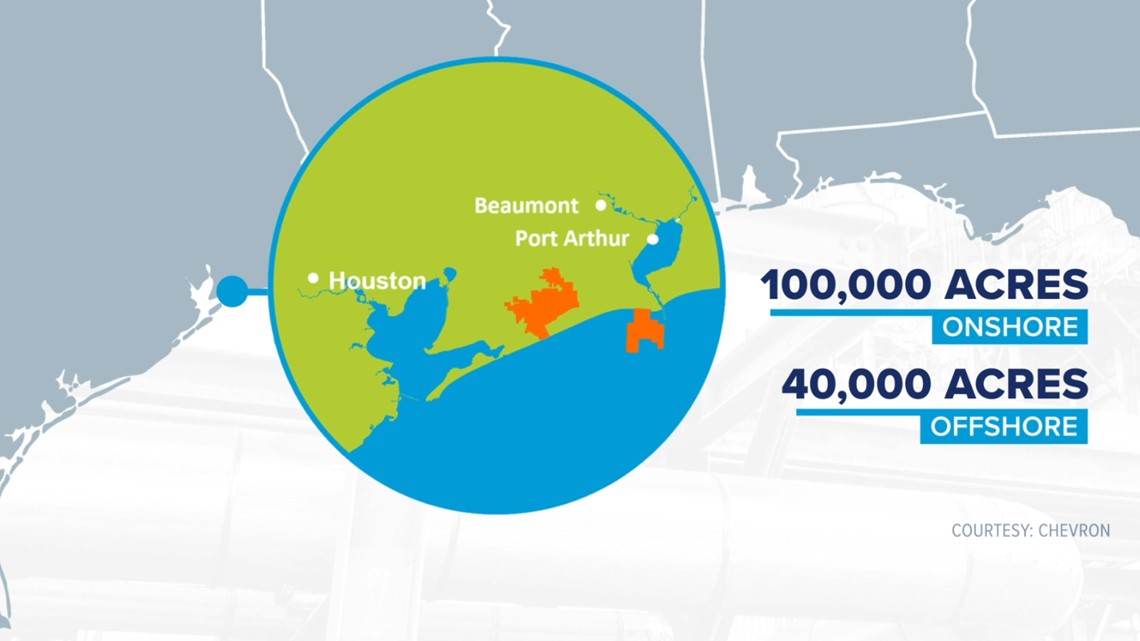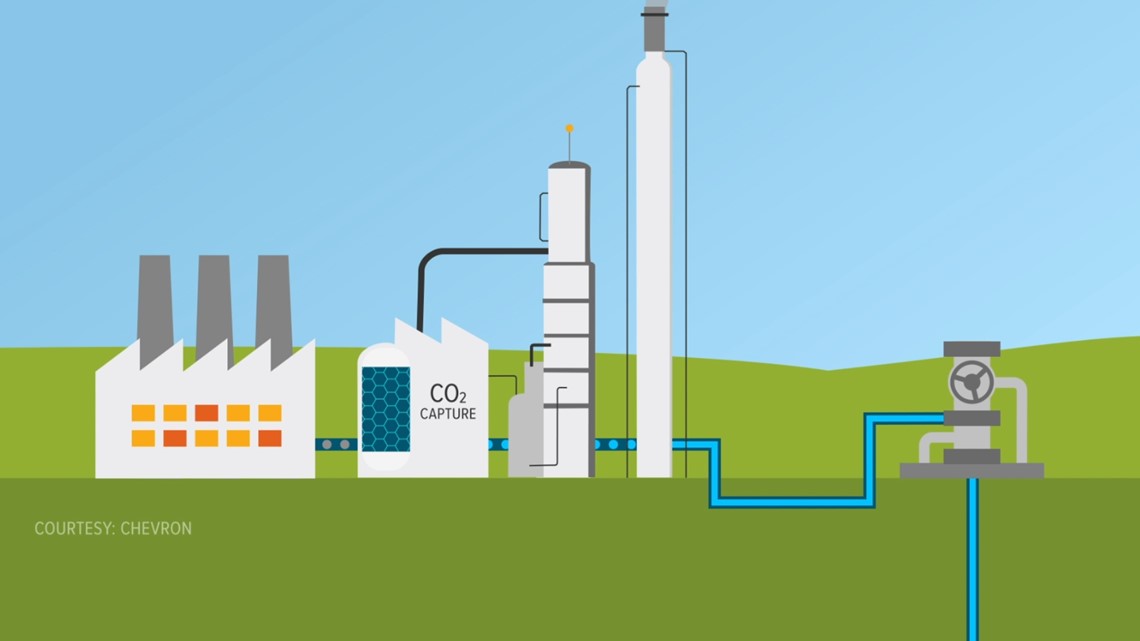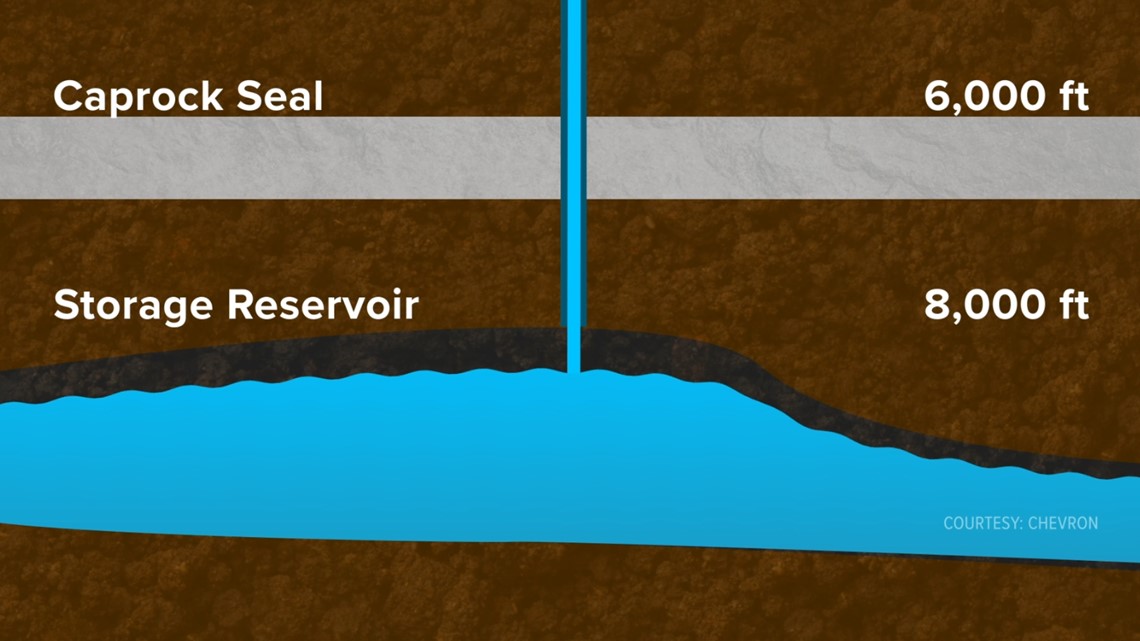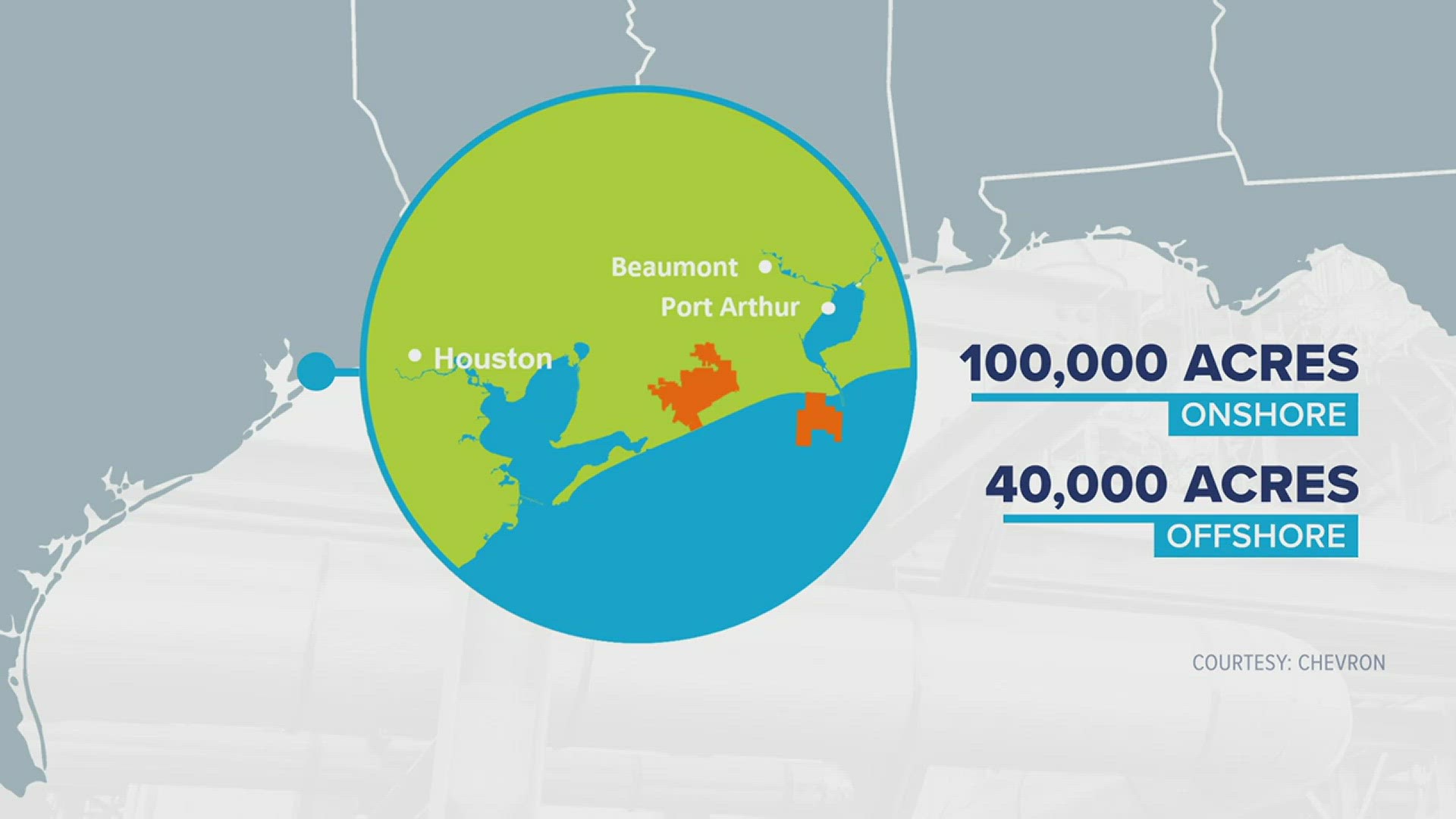BEAUMONT, Texas — Chevron executives have high hopes for their Bayou Bend carbon capture and storage project that's planned for Jefferson and Chambers counties. If permits are acquired, and funding secured, the project could be operational by 2026 or 2027.
This project is a joint venture between Chevron U.S.A, Inc., Talos Energy, Inc. and Carbonvert, Inc. The companies want to capture harmful emissions and inject them thousands of feet underground for safe storage.
Why in Southeast Texas?
If you head south from Winnie on Highway 124, you'll find prime property.
Chris Powers, Chevron New Energies Vice President for Carbon Capture, Utilization and Storage, says the Texas Gulf Coast is blessed with amazing geology.
"It's one of the best spots on the entire U.S. Gulf Coast. The same type of geology, the same formations, that up and down the coast benefited us by providing oil and gas now provide these amazing formations where we can inject carbon dioxide into the ground and safely store it," said Powers.
Bayou Bend has secured 100,000 acres onshore and 40,000 more offshore for the project. "This is thousands and thousands and thousands of feet below any drinkable water supply," Powers said.


Why launch the project now?
Powers says, it's a known scientific fact that the carbon dioxide concentration in the air is rising, which is why there is urgency for this project.
"It sounds insignificant, you're talking parts per million (PPM) levels, but as you model this over time, climatologically, it makes an impact on the environment," Powers said.
Powers is a Port Neches native whose family has been involved in the energy industry in Southeast Texas for decades. "My grandpa was a pipefitter at Gulf and my dad worked at Motiva," he said. For him, this project is personal.
"Companies have been managing CO2 for well over 40-50 years," Powers said.
But now, the need to manage CO2 is more urgent.
"2050 is sort of a marker year that I'll say the collective society has set as a goal - when we need to really be trying to turn over the CO2 concentration worldwide in the air," Powers explained.
What does carbon capture involve?
Carbon capture involves putting devices on smokestacks at petrochemical plants to store emissions. The concentrated CO2 then gets pressurized, put in a pipeline and sent to a storage site to be injected.
"So, we'll drill a well and then you go through various casing strings," Powers said. "You'll case off the various zones, you'll move down again to thousands of feet to your target interval, and then, you'll have an opening to the reservoir there, just like you'd have in the traditional business."


Most people won't even realize it's happening because the ranchland will be largely untouched, according to Powers.
As news spreads about the project, reactions from the public have been mixed.
"It's mixed and varied across not only the local area, but across across the world, right? Because this is a relatively new thing," Powers said.
Scott Castleman works with Houston CCS Alliance, which is a group of 12 companies pushing the technology.
"The EPA needs to grant the Texas Railroad Commission authority to grant permits to these companies to inject the CO2 in the ground," he said.
Castleman says these 12 companies are working closely.
"These companies are working together to find ways to advance carbon capture and storage to create opportunities to continue producing the products that we're so well known for in the Houston region," he said.
This entire project is all about working together to cut pollution and reduce the carbon footprint.
"We in the U.S. are seen as a leader in this space, so we're really able to use that know-how and understanding that we've built up over the last 50 years to make sure that we're doing it safely," Castleman said.


Is it safe for the public?
Dr. Ramanan Krishnamoorti, Professor of Petroleum Engineering and Chemistry at the University of Houston, says this project will be handled safely.
"So we know how to do it. We know how to do it safely. We know how to monitor that it is safe," he said. "It's been shown to be safe, it's been shown to be secure and that it does not lead to long term damage. That's all well and good, but you know, Beaumont ain't West Texas."
Krishnamoorti wants to reassure the public that whatever gets injected, will be carefully monitored.
"We've done extensive modeling of these things over the last 15-20 years to know that we can actually safely store it. We know what to look for in terms of where, if there's anything unusual happening," he said.
What does this mean for the economy?
Krishnamoorti knows people are worried about their jobs, but he says that fear is unfounded.
"Carbon Capture and Storage is actually future-proofing the economy of the United States, of Texas and of the world."
Castleford says workers currently in the oil and gas space will be able to utilize and take advantage of these new job opportunities.
"The skills are very much transferable," Castleford said.
"By doing this we are in many ways future-proofing the industries that built the foundation for the economy in the Golden Triangle area," Powers said.
When will the project be up and running?
A couple of things still need to come together before construction begins as the project is dependent on the permitting process.
The Environmental Protection Agency and Texas Railroad Commission will both be involved. Powers says it's too early to talk cost or which companies might sign on, but he's confident Bayou Bend is coming.
"This is good for the environment, it's good for the economy and it can be done safely and efficiently," Powers said.
If everything goes according to plan, the offshore component could be up and running in 2026 and the inland section could follow in 2027.

